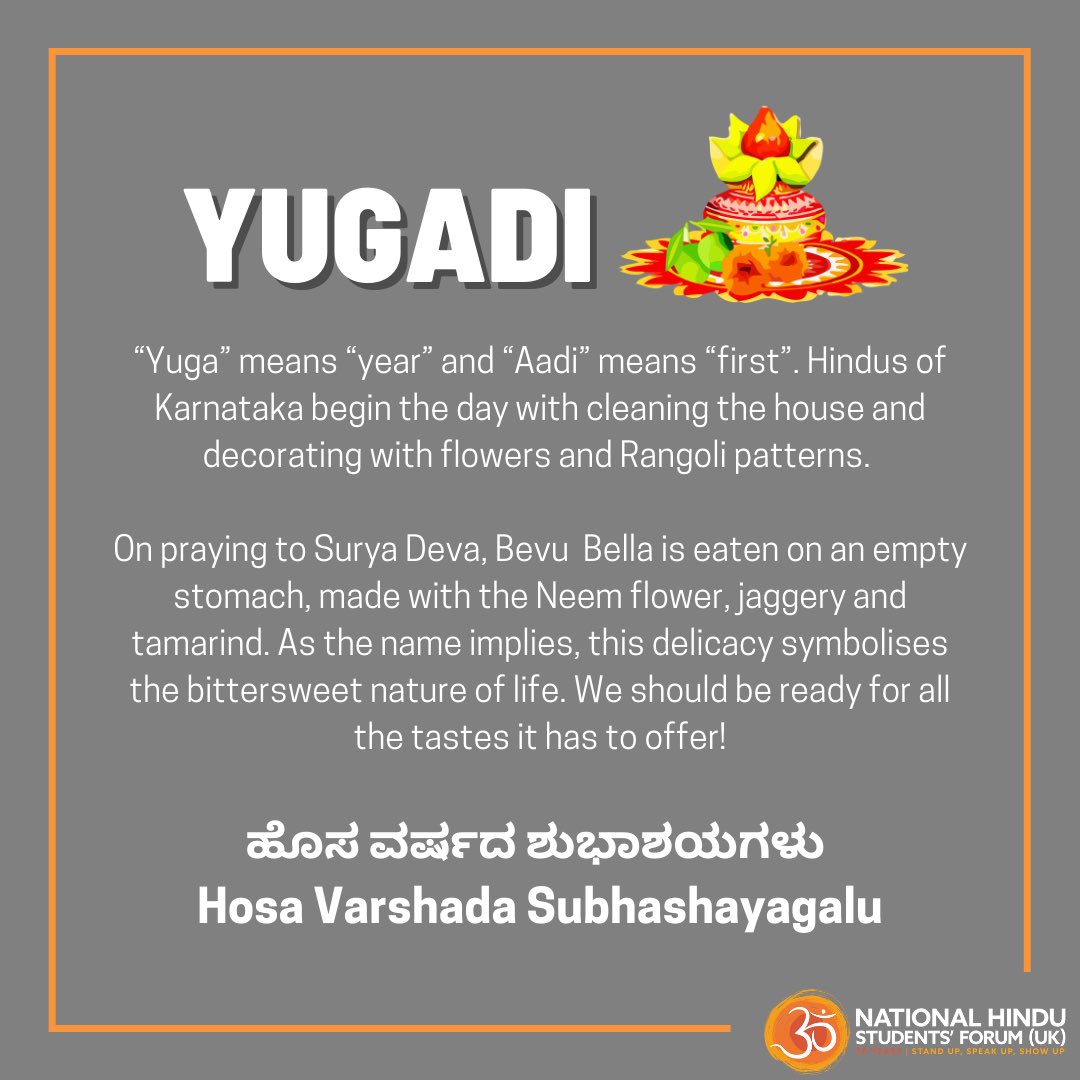
Our Hindu identity is an umbrella celebrating pluralism and diversity. 2021 will see the Solar and Lunar calendars align to have almost all Hindu communities celebrating their New Year on the same day!
We wish all our students a Happy Hindu New Year 🥳
nhsf.org.uk/2021/04/hindu-…

We wish all our students a Happy Hindu New Year 🥳
nhsf.org.uk/2021/04/hindu-…


Almost all New Year celebrations fall in the season of Vasanta (Spring), when nature awakens from the slumber of winter and is abundant with blossom and greenery.
We have an article on our website, explaining each Utsav in greater detail.
#navreh #chetichand #HinduNewYear

We have an article on our website, explaining each Utsav in greater detail.
#navreh #chetichand #HinduNewYear


There is no single Hindu calendar, rather a set of many regional and denominational variations of lunisolar calendars. All are as Hindu as the other.
Today is the beginning for those communities who mark their months on the Lunar calendar (Chandramana).
#HinduNavvarsh #Cheiraoba

Today is the beginning for those communities who mark their months on the Lunar calendar (Chandramana).
#HinduNavvarsh #Cheiraoba


The etymology of the word Utsav (उत्सव) is from the root “ut” meaning “removal”, and “sava” meaning “grief.”
Many people ask why do Hindus have so many festivals: the answer to it is simple – why not?!
#GudiPadwa #ugadi #HinduNewYear

Many people ask why do Hindus have so many festivals: the answer to it is simple – why not?!
#GudiPadwa #ugadi #HinduNewYear


You will find that regions that are thousands of miles apart, on polar ends of Bharat, will share identical customs, showcasing the true thread of unity that holds our Hindu culture altogether.
Tune in for the Solar New Years tomorrow👀
#samvatsarpadavo #Yugadi #HinduNewYear

Tune in for the Solar New Years tomorrow👀
#samvatsarpadavo #Yugadi #HinduNewYear


Do click on and find our second thread on the Solar New Year celebrations 🥳
Are there any we have missed ? Feel free to message us and we’ll get make sure the article is all updated 🙌🏼
Are there any we have missed ? Feel free to message us and we’ll get make sure the article is all updated 🙌🏼
https://twitter.com/nhsf_uk/status/1382381919661342722
• • •
Missing some Tweet in this thread? You can try to
force a refresh






